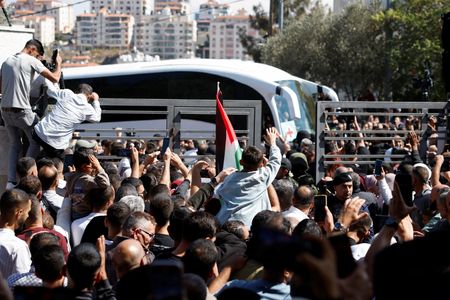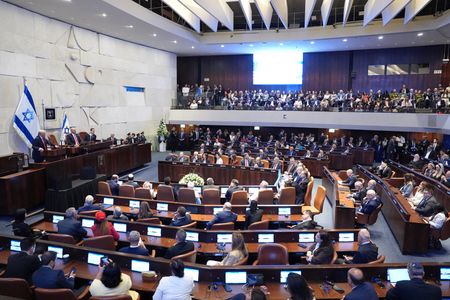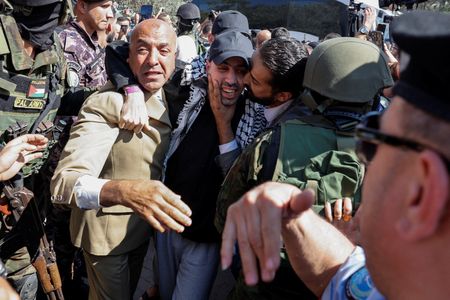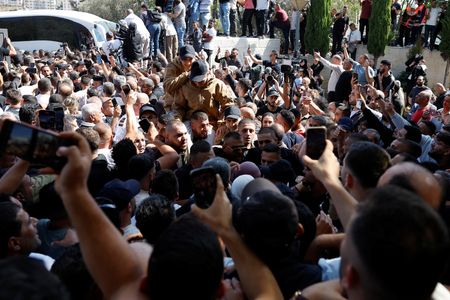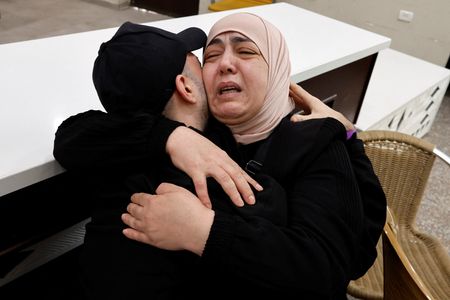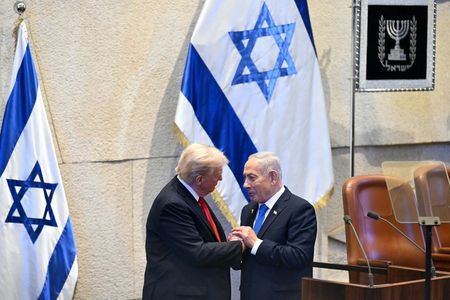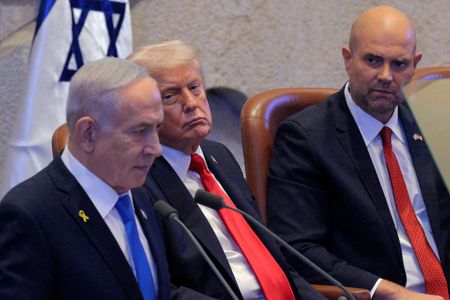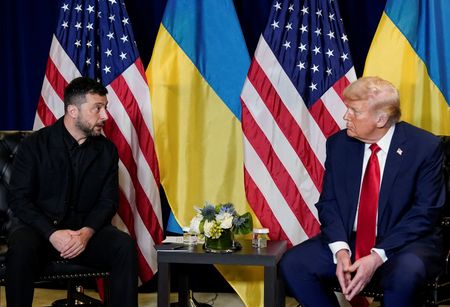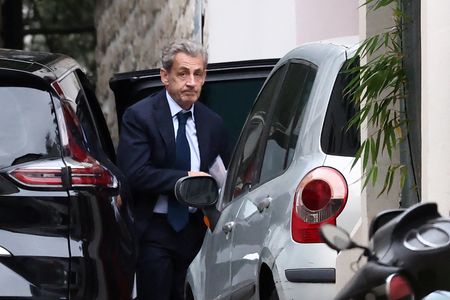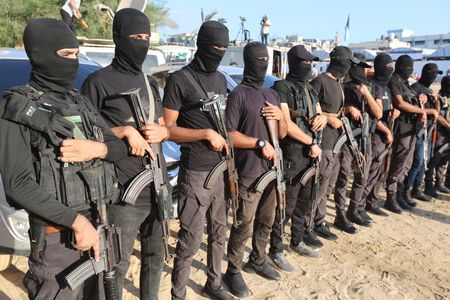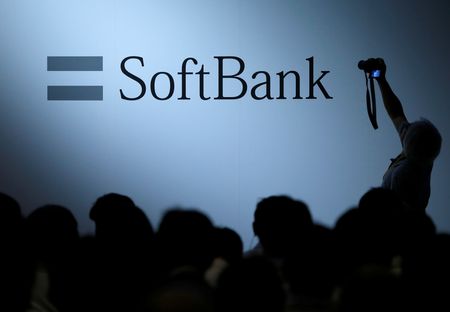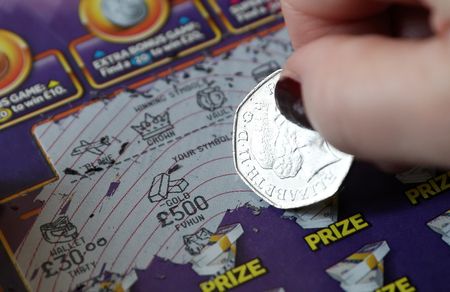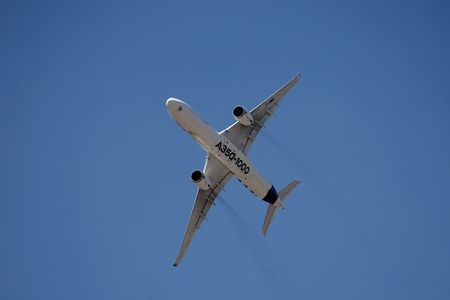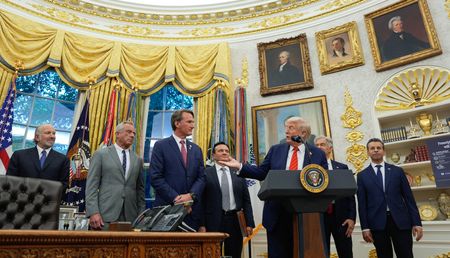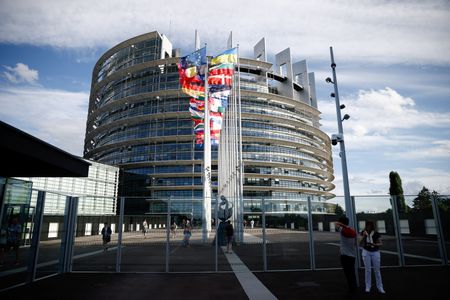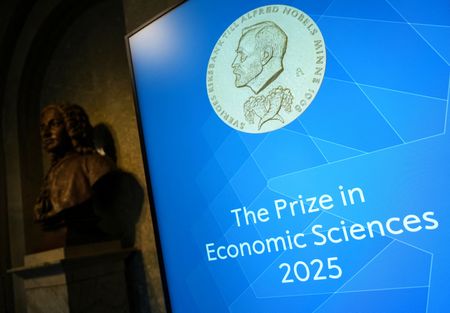By Nidal al-Mughrabi and Maayan Lubell
CAIRO/JERUSALEM (Reuters) -Hamas freed the last living Israeli hostages from Gaza on Monday under a ceasefire deal and Israel sent home busloads of Palestinian detainees, as U.S. President Donald Trump told Israel’s parliament that peace had arrived in the Holy Land.
The Israeli military said it had received all hostages confirmed to be alive, after their transfer from Gaza by the Red Cross. The announcement prompted cheering, hugging and weeping among thousands waiting at “Hostage Square” in Tel Aviv.
In Gaza, thousands of relatives, many weeping with joy, gathered at a hospital where buses brought home some of the nearly 2,000 Palestinian prisoners and detainees to be freed by Israel as part of the accord.
“The skies are calm, the guns are silent, the sirens are still and the sun rises on a Holy Land that is finally at peace,” Trump told the Knesset, Israel’s parliament, saying a “long nightmare” for both Israelis and Palestinians was over.
“Now it is time to translate these victories against terrorists on the battlefield into the ultimate prize of peace and prosperity for the entire Middle East,” he said before departing for a summit in Egypt intended to cement the truce.
He arrived in the Egyptian beach resort of Sharm el-Sheikh about an hour before sundown for the gathering of more than 20 world leaders, which he was to chair alongside President Abdel Fattah al-Sisi.
Large billboards showing a beaming Trump and Sisi with the words “welcome to the land of peace” lined the road from the airport to the conference centre. In remarks after landing, Trump thanked Sisi for his role as a mediator.
FORMIDABLE OBSTACLES REMAIN
The release of the last living hostages captured in the October 2023 Hamas attacks, which killed 1,200 Israelis and precipitated the war, in return for around 2,000 Palestinian prisoners and detainees follows a ceasefire and partial Israeli withdrawal in the enclave.
Thousands of Palestinians have been able to return in the past few days to the ruins of homes they fled in the Gaza Strip, where health authorities say 68,000 people were killed in fighting that displaced nearly the entire 2.2 million-strong population.
However, formidable obstacles remain, even to securing an enduring ceasefire, much less to bringing a wider, more durable peace. Among the immediate issues still to be resolved: recovering the remains of another 26 Israeli hostages believed to have died and two whose fates are unknown.
Hamas says recovering the bodies could take time as not all burial sites are known. It said on Monday it would soon hand over four bodies and the Israeli military confirmed it had received two coffins and expected two more.
Aid supplies must be rushed into the enclave, where hundreds of thousands of people face famine. U.N. aid chief Tom Fletcher underlined the need to “get shelter and fuel to people who desperately need it and to massively scale up the food and medicine and other supplies going in”.
Beyond that, crucial issues have yet to be resolved, including how to govern and police Gaza, and the ultimate future of Hamas, which still rejects Israel’s demands to disarm.
Hamas gunmen, seeking to assert their presence, launched a security crackdown in Gaza City after Israel’s pullback, killing 32 members of a rival group, a Palestinian security source said.
The Gaza War has also reshaped the Middle East through spillover conflicts, with Israel imposing punishing damage in a 12-day war against Iran and campaigns against Tehran’s regional allies, including Lebanon’s Hezbollah and Yemen’s Houthis.
Trump, who has presented his plan as the catalyst for a wide regional peace settlement, even floated the idea of a peace deal between arch Middle East enemies Iran and Israel, telling the Knesset he thought Iran wanted one: “Wouldn’t it be nice?”
JOY, RELIEF ON BOTH SIDES
Beaming with relief and joy, two released hostages waved to cheering crowds from vans on the way to an Israeli hospital, one hoisting a large Israeli flag then forming a heart with his hands.
Video footage captured emotional scenes of families receiving phone messages from their loved ones as they were being released, their faces lighting up with disbelief and hope after months of anguish.
“I am so excited. I am full of happiness. It’s hard to imagine how I feel this moment. I didn’t sleep all night,” said Viki Cohen, mother of hostage Nimrod Cohen, as she travelled to Reim, an Israeli military camp where hostages were being transferred.
Palestinians meanwhile rushed to embrace prisoners freed by Israel. Several thousand gathered inside and around Nasser Hospital in Khan Younis in southern Gaza, some waving Palestinian flags, others holding photos of their relatives.
“I am happy for our sons who are being freed, but we are still in pain for all those who have been killed by the occupation, and all the destruction that happened to our Gaza,” a Gaza woman, Um Ahmed, told Reuters in a tearful voice message.
Freed prisoners arrived in buses, some of them posing from the windows, flashing V-for-Victory signs. The appearance of armed and masked Hamas fighters at the scene underscored the difficulty of resolving Israel’s demand that they disarm.
Israel was due to release 1,700 detainees it captured in Gaza, as well as 250 prisoners from its jails convicted or suspected of security offences, including attacks on Israelis.
Samer Halabeya, a doctor freed from jail where he was serving a sentence for planning an attack that wounded an Israeli officer, stood by his weeping mother in Ramallah in the occupied West Bank.
“We hope that everyone gets freed,” he said.
(Reporting by Maayan Lubell, Steven Scheer and Alexander Cornwell in Jerusalem, Nidal al-Mughrabi in Cairo, Andrew Mills in Doha, Evelyn Hockstein aboard Air Force One, Jana Choukeir, Ahmed Elimam and Tala Ramadan in DubaiWriting by Howard Goller, Angus McDowall and Peter GraffEditing by Lincoln Feast, Timothy Heritage, Mark Heinrich and Frances Kerry)

